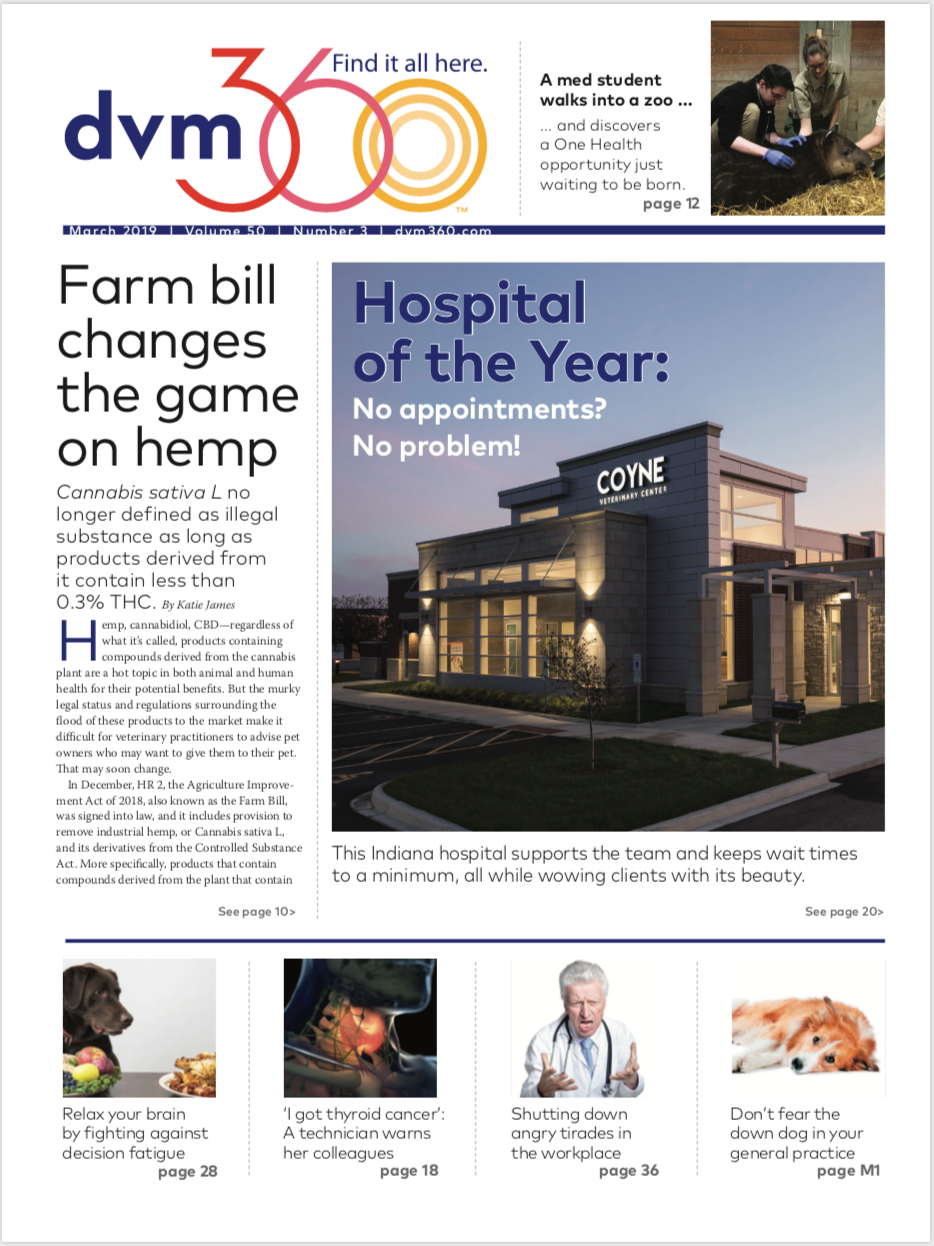Teams, not fees, make equipment great
Forget fees. If you want to make the most of a new equipment purchase, like new digital radiography, you want your veterinary practices team on board and using it to its full potential. Here are my three steps to think about to get there.
Come together ... right now ... over fees. (Andrey Popov/stock.adobe.com)

This is the moment you've planned for-it's time to integrate a shiny, new radiography unit into your veterinary practice. Whether you're finally making the switch from film to digital, or upgrading your existing digital unit, you're getting ready to make a decision that will have a sizable impact on your team. And the last thing you want to do is throw a major investment against the wall to see if it sticks.
It's no surprise that the main deciding factor for this purchase centers on capturing the revenue. Formulas are everywhere online to help advise you on calculating your ROI. I think that's the easy part: fee setting, schmee setting. The way I see it, you can only price out your services within the limit of your market and demographic. To practice owners and administrators, the “value” of a cool new radiography unit means enhancing patient care, paying it off in a reasonable amount of time and adding to the bottom line. Value, however, means something different to everyone, and “everyone” includes the members of your team. So, before you embark on a number-crunching journey, it'd be in your best interest to diagnose the value of our new radiography unit to your team.
Step 1. Engage the people who are actually going to use it
They're be on the frontline using the new equipment, and they're the best people to help you identify obstacles that could stand in the way of success.
Start with your doctors. Their input and buy-in for pricing strategies and protocols are the most influential. Without their buy-in and their understanding of any new protocol changes, you risk implementing something that the doctors feel they need to create work-arounds for.
Give your veterinary technicians and assistants a voice in the planning phase. Ask them to highlight features they feel will help them provide the best patient care while considering their skills and contribution.
And what about the front desk? Is your reception team a part of capturing charges and making sure services rendered are accounted for?
Do you have inventory, maintenance or janitorial staff who will be essential in overall care of your new equipment?
Don't leave any position in your practice out of this exciting new enhancement! Once you've gathered the pertinent information to spark excitement throughout your practice, you're ready to hold a company meeting to announce all the ways you've listened to what they have to say. One way to engage a team is to ask for, listen to and validate their needs and concerns.
Step 2. Communicate the ‘why' to your team to avoid people assuming things
It's a given that you're not going to be able to address 100 percent of everyone's concerns or ideas. But it doesn't mean you have to lose buy-in. This is where you want to be transparent and provide the reasons behind the final decisions. Be sure to connect how the new protocols and charges will provide sustainable growth for the practice overall. This could be the possibility of future equipment, increasing staff numbers, bonus structures or educational opportunities.
If you don't clearly communicate the hospital's “why,” team members will need to draw their own conclusions.
If you don't clearly communicate the hospital's “why,” team members will need to draw their own conclusions. And veterinary practice team members tend to be really imaginative when left to their own assumptions, so think smarter and stay in front of them.
If you find that the best decisions for the success of your new unit don't fall in line with some strong opinions, it may be in your benefit to meet with those people individually for a more direct conversation. Make sure they know the non-negotiables and what impact they have for the practice while still keeping your lines of communication open.
Step 3. Empower the team to use the new equipment in every way possible
How many times have you watched one of your passionate technicians learn new information regarding a medication and then that new knowledge translates into confidence? Knowledge, passion and confidence combined create an unflappable sense of empowerment.
In this empowerment stage, you can keep your employees engaged by fully comparing and contrasting the old unit's features to the new unit's features. Get creative with them and make their learning fun. Invite a radiologist to present an on-site lunch-and-learn to provide applicable skills in real time. Fully understanding the new equipment will help the team develop their own “why” as they see the enhancements they're bringing to patient diagnostics. Employees understanding the “why” feel more empowered to educate their clients, resulting in higher client compliance.
Yes, you've got to figure out what to charge for your services to make sure a new piece of equipment makes financial sense. But it doesn't matter how strategically you price your services if your team can't communicate the value to your clients. Before you overemphasize the numbers, take time to engage, communicate and empower.
A dvm360/VHMA Practice Manager of the Year, Angelina Morgan, CVPM, is hospital administrator at Pet+ER's two locations in Towson and Columbia, Maryland.
